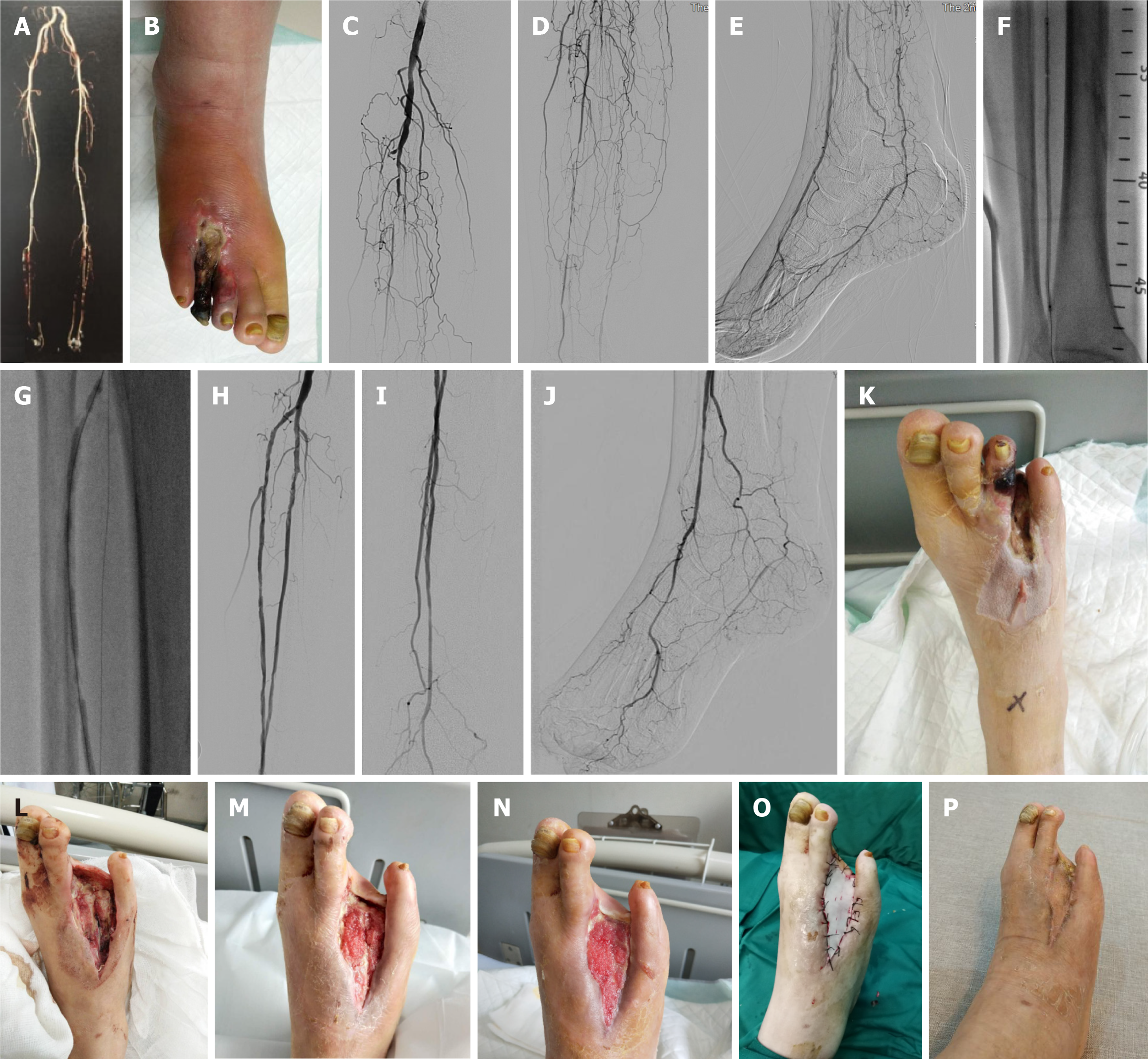Copyright
©The Author(s) 2024.
World J Diabetes. Jul 15, 2024; 15(7): 1499-1508
Published online Jul 15, 2024. doi: 10.4239/wjd.v15.i7.1499
Published online Jul 15, 2024. doi: 10.4239/wjd.v15.i7.1499
Figure 1 Surgery pictures of infrapopliteal artery occlusion case.
A: Lower extremity computerized tomography angiography suggests infrapopliteal artery occlusion; B: Gangrene of the fourth toe with infection; C-E: Long-segment occlusions of the anterior tibial artery, posterior tibial artery and peroneal artery; distal dorsal pedis artery and posterior tibial artery were demonstrated through lateral branches; F and G: The anterior tibial artery and peroneal artery were dilated by balloon angioplasty (BA) during the operation; H-J: After BA, the anterior tibial artery and peroneal artery were unobstructed, and the communication between lateral plantar artery and peroneal artery was developed; K and L: After revascularization, local debridement, removal of necrotic tissue and the 3rd and 4th phalanx, and vacuum-assisted closure (VAC) aspiration were performed; M: The wound surface two weeks after VAC; N: The wound granulation tissue grew well three weeks after VAC and reached the conditions for skin grafting; O: Skin grafting with split-thickness skin graft from the inner leg; P: Wound repair two months after skin grafting.
- Citation: Lei FR, Shen XF, Zhang C, Li XQ, Zhuang H, Sang HF. Clinical efficacy of endovascular revascularization combined with vacuum-assisted closure for the treatment of diabetic foot. World J Diabetes 2024; 15(7): 1499-1508
- URL: https://www.wjgnet.com/1948-9358/full/v15/i7/1499.htm
- DOI: https://dx.doi.org/10.4239/wjd.v15.i7.1499









